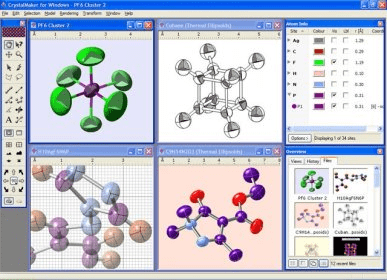

Springer Verlag, Berlin.Ĭlementi E, Raimondi DL, Reinhardt WP (1963). Vainshtein BK, Fridkin VM, Indenbom VL (1995) Structure of Crystals (3rd Edition).

CrystalMaker uses Atomic radii data from two sources: Although more electrons are being added to atoms, they are at similar distances to the nucleus and the increasing nuclear charge "pulls" the electron clouds inwards, making the atomic radii smaller.Ītomic radii are generally calculated, using self-consistent field functions. Atomic radii decrease, however, as one moves from left to right, across the Periodic Table. The general trend is that atomic sizes increase as one moves downwards in the Periodic Table of the Elements, as electrons fill outer electron shells. Atomic RadiiĪtomic radii represent the sizes of isolated, electrically-neutral atoms, unaffected by bonding topologies. In the following article we'll explore a number of different sets of distinct atomic radius sizes, and later we'll see how you can make use of these "preset" values with CrystalMaker. Take the humble carbon atom as an example: in most organic molecules a covalently-bonded carbon atom is around 1.5 Ångstroms in diameter (1 Ångstrom unit = 0.1 nanometres = 10 -10 metres) but the same atom in an ionic crystal appears much smaller: around 0.6 Ångstroms. However, even for atoms of the same type, atomic radii can differ, depending on the oxidation state, the type of bonding and - especially important in crystals - the local coordination environment. To a first approximation we can regard atoms as "hard spheres", with an outer radius defined by the outer electron orbitals. How big is an atom? A simple question maybe, but the answer is not at all straighforward.


 0 kommentar(er)
0 kommentar(er)
